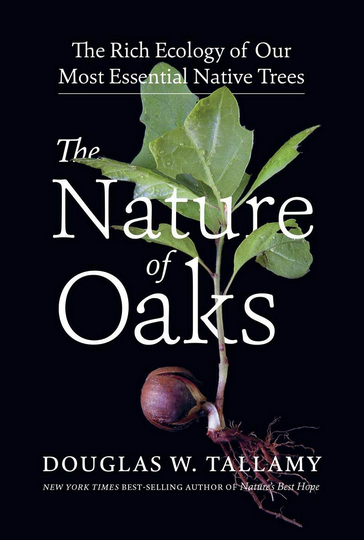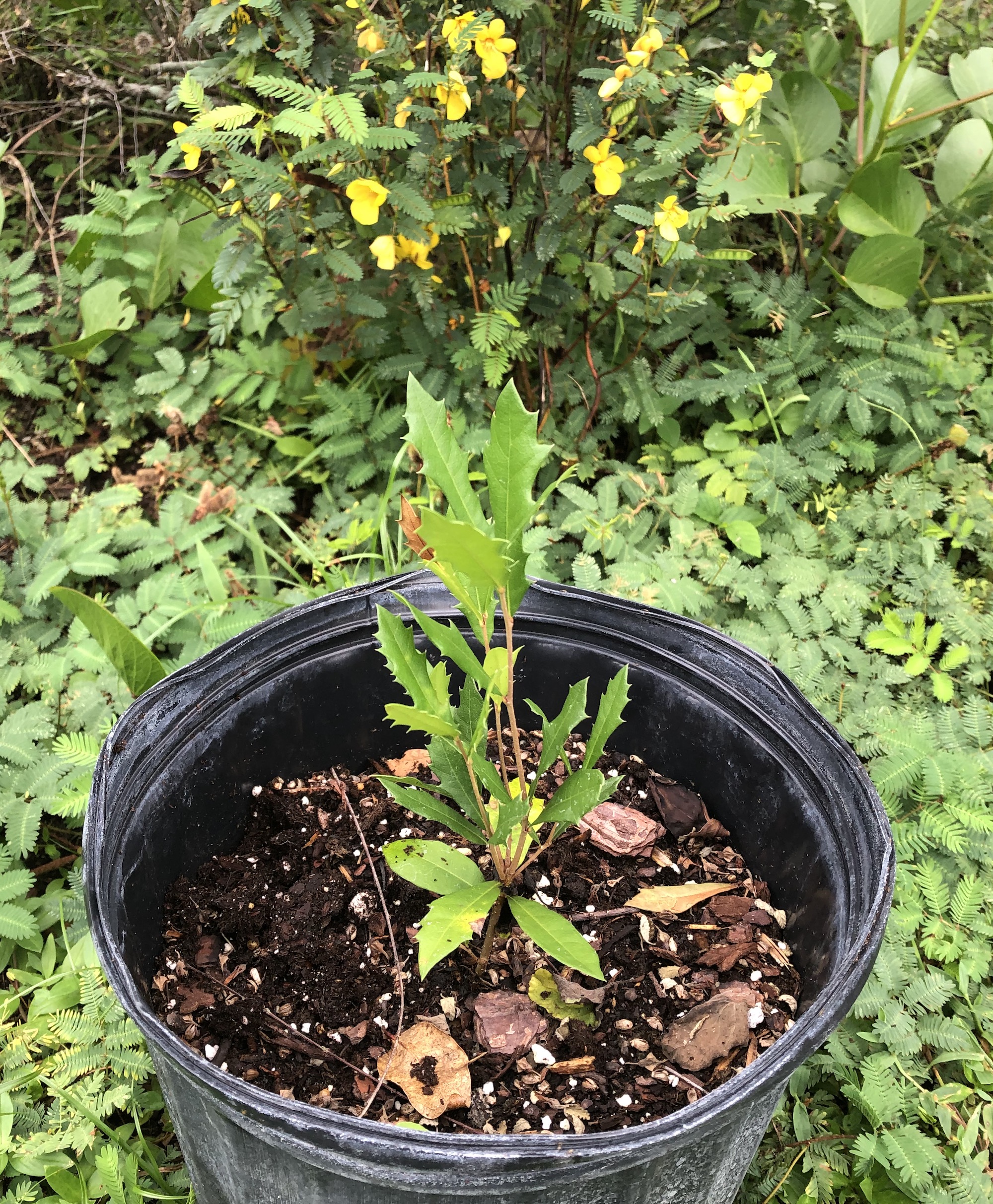Tequesta Notes
an initiative for the citizens of Tequesta

Tuesday, July 6, 2021
Book Review:
The Nature of Oaks
A recent book by entomologist Douglas Tallamy details the vast array of health benefits that oaks (and other native trees) provide for the land and water (and hence for humans). We will spotlight a few of these benefits.
Clean Water
It might be surprising how significantly oaks, and the leaf litter under oak trees in particular, purify water so that streams, rivers, and estuaries can be healthy. This is an urgent issue in Florida so let's look at this first. Here are some quotes from Tallamy:
When rain falls it starts its inevitable journey to the sea. If this journey is rapid, the rain carries topsoil and pollutants to streams and then rivers which terminate in the oceans. If rain water is slowed by vegetation, more of it seeps into the ground rather than rushing into local streams. Such infiltration not only replenishes water tables but also scrubs the water clean of its nitrogen, phosphorus and heavy metal pollutants. Moreover slow and steady discharge from water tables into streams and rivers reduces the destructive pulse of storm water that scours our tributaries of their biota. By virtue of their leaf surface area and root systems, oaks impede rain water from the moment it condenses out of clouds. Much of the water intercepted by leafy oak canopies (up to 3,000 gallons per tree annually) evaporates before it ever reaches the ground. All this makes oaks one of our very best tools in responsible watershed management. P.122.
Prevent Flooding
Oak leaves on the ground improve water infiltration. Fallen leaves form into a thick mat that acts like a sponge for rainfall and it is most valuable in intense rains.
"The water from a two inch downpour, for example, more than 54,000 gallons per acre, is captured almost entirely by an oak forest's leaf litter and the organic humus it creates."
"Litter and humus don't hold this water indefinitely but they do corral it on site just long enough for it to seep into the ground."
"The upper layers of the water table are always on the move slowly sliding underground toward the nearest stream or river. These purified waters enter waterways slowly and evenly delivering that two inch rain slowly and evenly over several weeks instead of a gushing flood of storm water run off. This stabilizes water flow in streams which in turn prevents scouring and the destruction of aquatic communities of insects, crustaceans, and fish. Who needs healthy stream communities? Well, who needs plentiful, reliable, clean fresh water?"
"In areas with no leaf litter the same two inch rain storm causes a flood. Bare soil cannot and does not hold water in one spot long enough for infiltration. Instead rain water rushes off site." P.56.
This clogs streams and rivers with pollution and sediment.
Support Life
Oaks create essential habitat in themselves and on the ground nearby for a vast multitude of beneficial insects and animals.
"Caterpillars mostly drop from trees and pupate underground or cocoon under the trees." They need the leaf litter for this. P.145-146.
"An easy solution to this dilemma [to allow a flourishing life under oaks] is to create beds under our trees that remain undisturbed all year round." P.147.
"Oak leaf litter under these plantings would complete a perfect habitat for oak caterpillars."
Oak leaves make a great mulch.
Cool Towns
"Oaks moderate our local micro-climate in a way that makes life more comfortable ... ." They also dissipate strong wind and reduce the heat island effect of cities in heat waves. P.123.
Useful Tips
Plant small trees. Tallamy recommends planting acorns rather than established trees. "Acorns are easy, free, and plentiful. They will grow into healthier trees than if you plant established trees. The only thing they don't give you is instant gratification."

sprouted 2 November 2020
Actually acorns are a lot of fun and great for kids. Who doesn't appreciate watching a little tree grow up. And a little tree with its latent potential is a real signal of hope.
If you plant a seedling, Tallamy recommends trees with a trunk width less than one inch in diameter. "When you buy a large tree, the tree cannot be moved without being severely root pruned or if it has been grown in a pot its roots have been wound around each other so tightly that they will strangle each other as they grow."
Clusters are fine. Planting in clusters can help the trees survive big storms. "Two or three trees planted within ten feet of each other will interlock their root systems as they grow and be far less vulnerable to dangerous blow downs when they mature."
Variety. One of the useful references at the end of the book lists oaks in the categories large trees, intermediate trees, and small trees. So you can find the right oak for a range of spaces.
Douglas Tallamy is a best selling author of books concerning the importance of native plants for healthy land (such as Nature's Best Hope), and you can hear him speak to the town hall of Palm Beach in the video at The Vital Need To Restore Habitat. The Nature of Oaks is widely available in local bookstores and local libraries.
This website is dedicated to topics important to residents of the Village of Tequesta. If you have information concerning important issues for Tequesta or its government (or corrections or suggestions for anything on this website), please email hello@TequestaNotes.org.
TequestaNotes.org